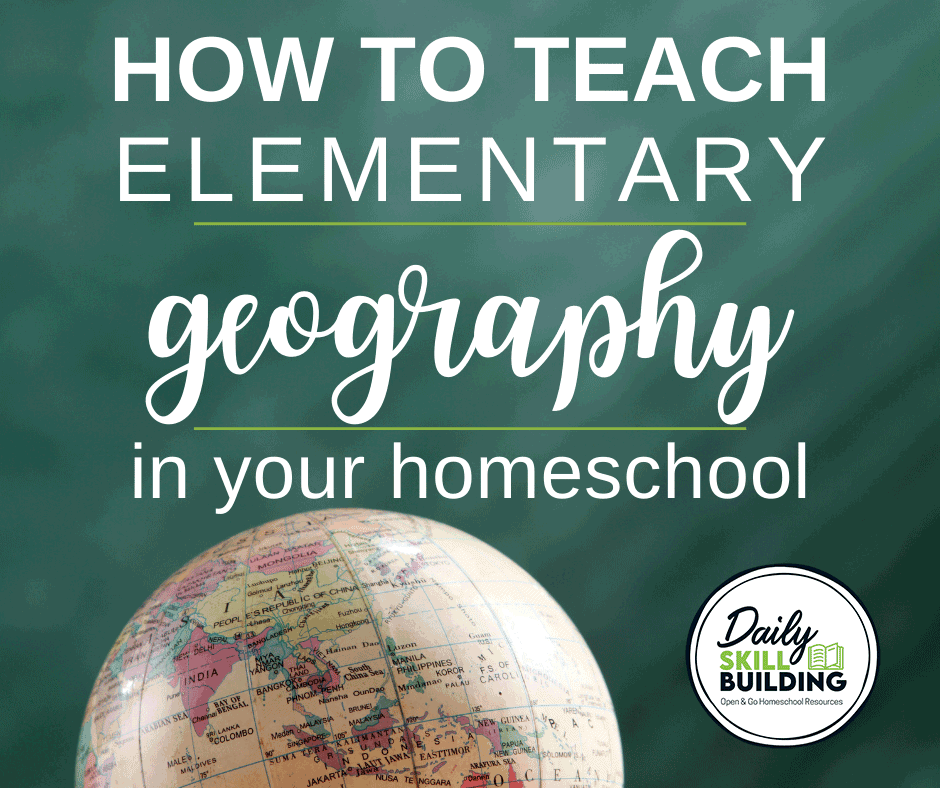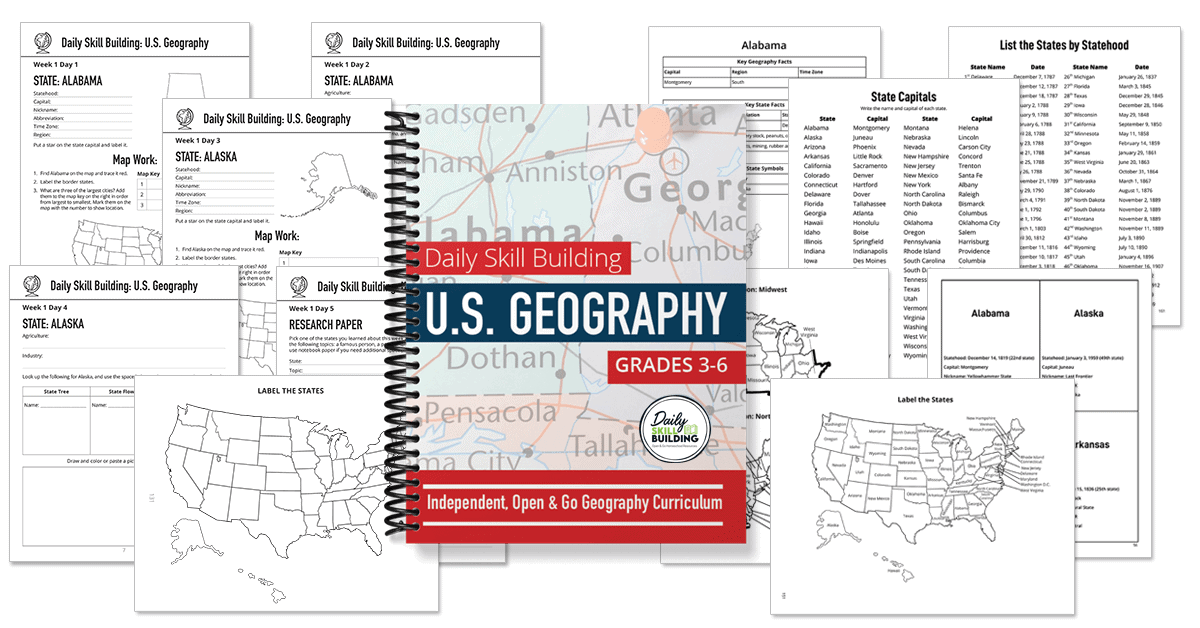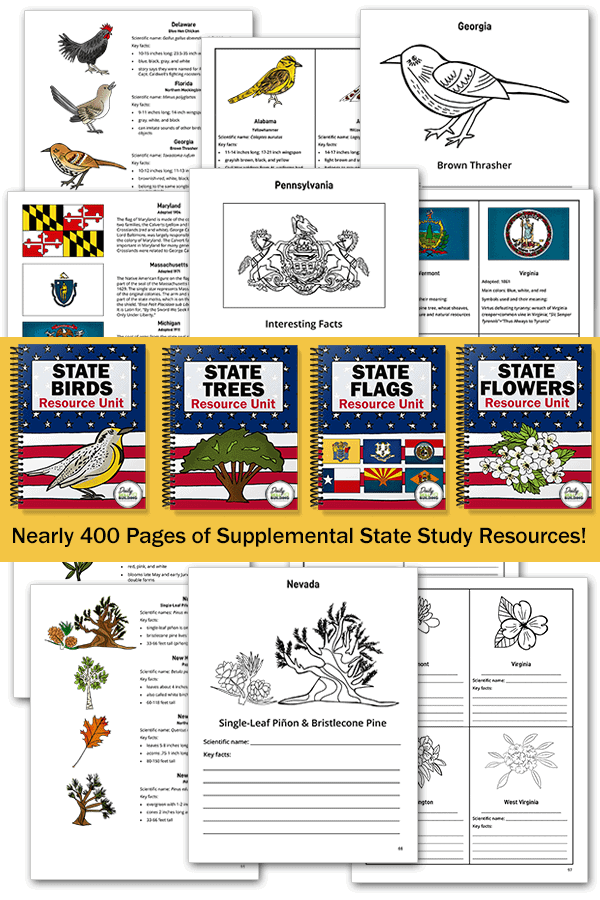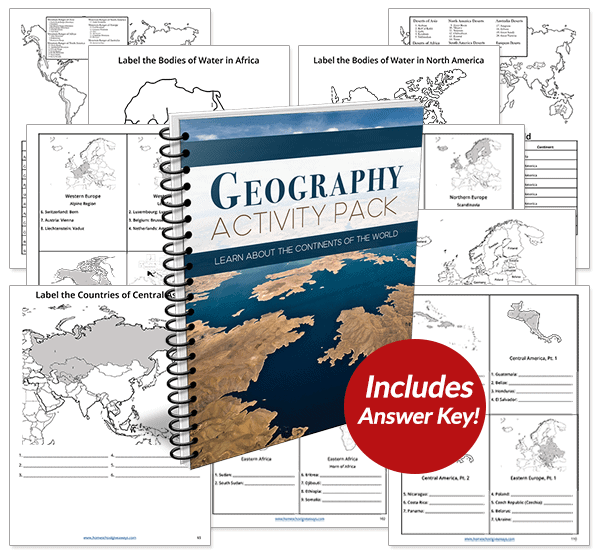Elementary geography is another one of those hit or miss subjects taught (or neglected) in most homeschools. Some kids are super intrigued to learn about different places and cultures around the world. Others couldn’t care less, in which it becomes pulling teeth to get them to even look at a picture of a map.
Regardless of which end of the scale your kids fall on, there are practical ways to teach homeschool geography and make it fun!
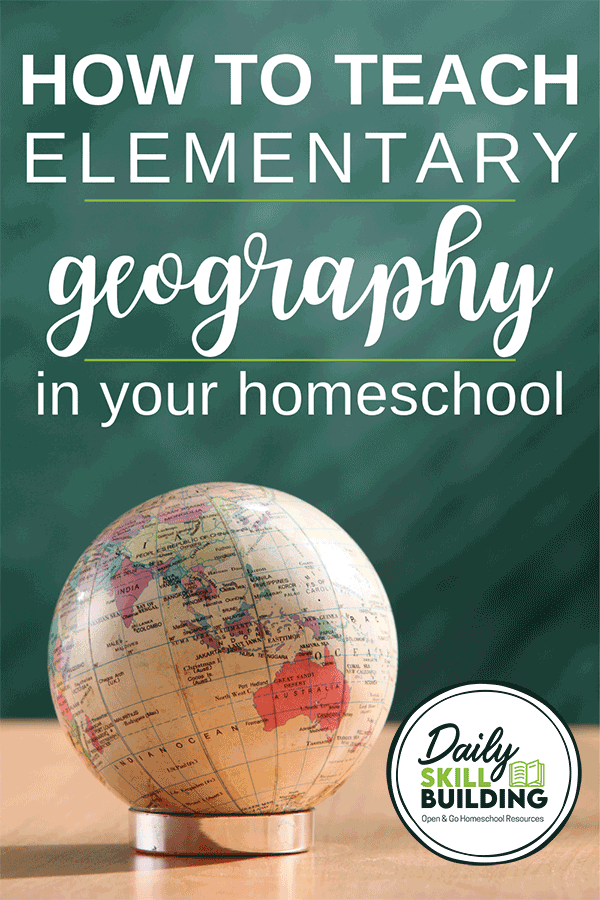
Why is teaching elementary geography in your homeschool important?
For starters, geography can be considered the foundation to which the social sciences of government, economics, sociology, and history are all built on. Geography helps answer questions to why some civilizations thrived whereas others seemed to die off. It also explains why certain parts of the world carry peculiar nicknames, like the great plains area of the United States being called the “breadbasket.”
Teaching a variety of geographical concepts in the elementary years gives kids a solid foundation for studying related topics in other subjects. Learning about the way Ancient Greeks carried out their democracy goes much deeper than science. It becomes geography when you take a deeper look at how their country was divided and the population of their citizens.
So, while geography may seem like a stand-alone subject that has to be taught in a mundane way, that doesn’t have to be the case.
How to Teach Elementary Geography in Your Homeschool
Since geography is interwoven into other important subjects, it can be seen as an important piece to a well-rounded education. The goal isn’t to simply put it on the check-off list, but to help foster a love for learning. Here are three tips for doing just that.
1. Invest in an easy-to-follow geography curriculum.
Having a good geography curriculum is a must, but it also helps if it is created in an easy-to-follow format. You’ll want to make sure it accommodates your kid’s unique learning style while also meshing well with your teaching style.
If you’re a busy homeschooling mom looking to enhance a study of United States geography, then you may want to look into resources that have an open-and-go approach, like our U.S. State Study Resource bundle. Resources like these have done all the hard work for you, so all you’ll need to do is open and go!
2. Teach elementary geography in a unit study format.
One of the biggest benefits of incorporating unit studies in your homeschool is that you’re able to teach multiple subjects using one topic or concept. When it comes to geography, this becomes incredibly easy to do. Take our Daily Skill Building: U.S. Geography, for example. This resource alone will take your kids through all 50 states over the course of 25 weeks but also in a depth that goes far beyond simply learning a state’s name and location. The topic being the United States can then be used in other subjects, such as history, english, and language arts.
3. Teach elementary geography with other subjects.
Similar to the unit study method, teaching geography with other subjects takes the pressure off lesson planning for this subject area alone. Instead, you can find inclusive curriculum and resources that are considered all-inclusive. Most history, science, and literature resources have some form of geography embedded in them so going this route usually means less work on the parent’s part. To ensure you’re getting a good dose of geography with an inclusive lesson, consider adding a geography supplement like an activity pack or notebooking resource.
Final Thoughts
Teaching elementary geography in your homeschool doesn’t have to be non-existent or boring. Instead, take into consideration the developmental needs of your children and use the tips mentioned above to make geography a fun subject to learn.
